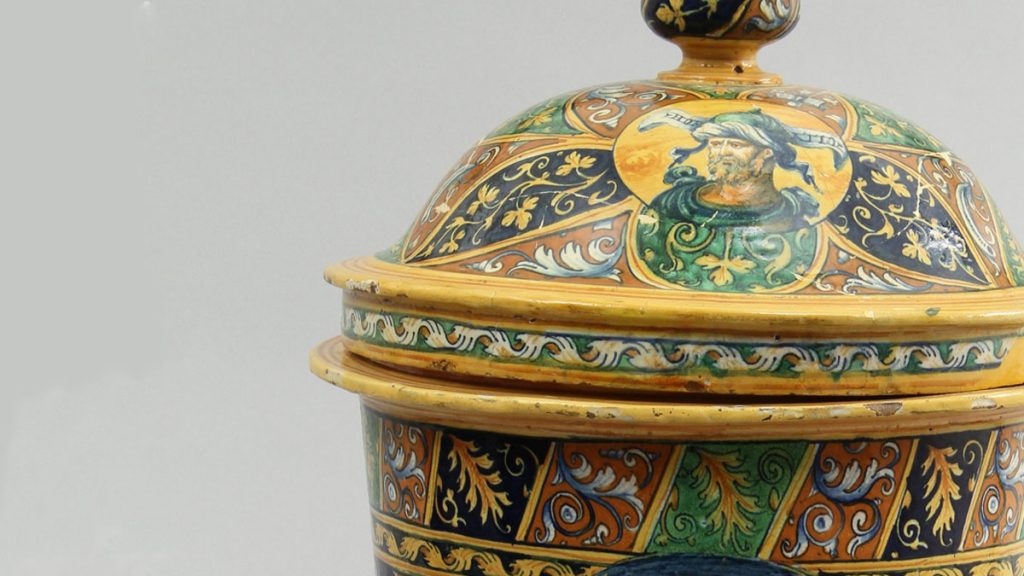European Earthenware
The Gardiner Museum’s holdings highlight important developments in the history of European earthenware from the fourteenth to the eighteenth centuries, including tin-glazed earthenware, English slipware, and creamware. Earthenware is the term given to ceramics that have been fired at a comparatively low temperature and have not vitrified. They have opaque bodies and are often glazed to make them impervious to liquids. Different types of earthenwares are given specific names that distinguish their bodies, glazes, and decoration.
An important area of focus is tin-glazed earthenware produced in Italy, France, and England, where it was known as maiolica, faïence, and delftware respectively. Tin-glazed earthenware first appeared in the nineth century in present-day Iraq, and involved the addition of ashes of tin to a lead glaze to create an opaque white surface for decoration in emulation of Chinese porcelain. Throughout the next five centuries, knowledge of tin-glazing spread throughout the Middle East and the Mediterranean. The movement of objects and people further prompted its dissemination to Italy and Northern Europe.
Explore European Earthenware
1. Monumental Pharmacy Jar (detail), Italy, Faenza, Attributed to the workshop of Virgilotto Calamelli, c.1550, Gift of George and Helen Gardiner, G83.1.354a-b
2. Hound’s Head Stirrup Cup (detail), England, c. 1770s. Gift of Jean and Kenneth Laundy, G08.2.45
3. Charger (detail), France, Rouen, attributed to the Poterat manufactory, late 17th century, The Pierre Karch and Mariel O'Neill-Karch Collection, G15.8.1
4. Pair of Shoes (detail), England, possibly London, 1705-1715, Gift of George and Helen Gardiner, G83.1.549.1-2. Photographer: Toni Hafkenscheid
5. Dish with Scenes of the Abduction of Europa (detail), Italy, Faenza, Attributed to the Master of the Bergantini Bowl, c.1537, Gift of George and Helen Gardiner, G83.1.351
6. Bird Dish (detail), England, possibly Staffordshire, possibly by Thomas Toft (d.1689), c.1690-1710, Gift of George and Helen Gardiner, G87.1.3
7. Sculpture of a Stove (detail), Switzerland, Winterthur, c.1650, The Hans Syz Collection, G96.5.418

